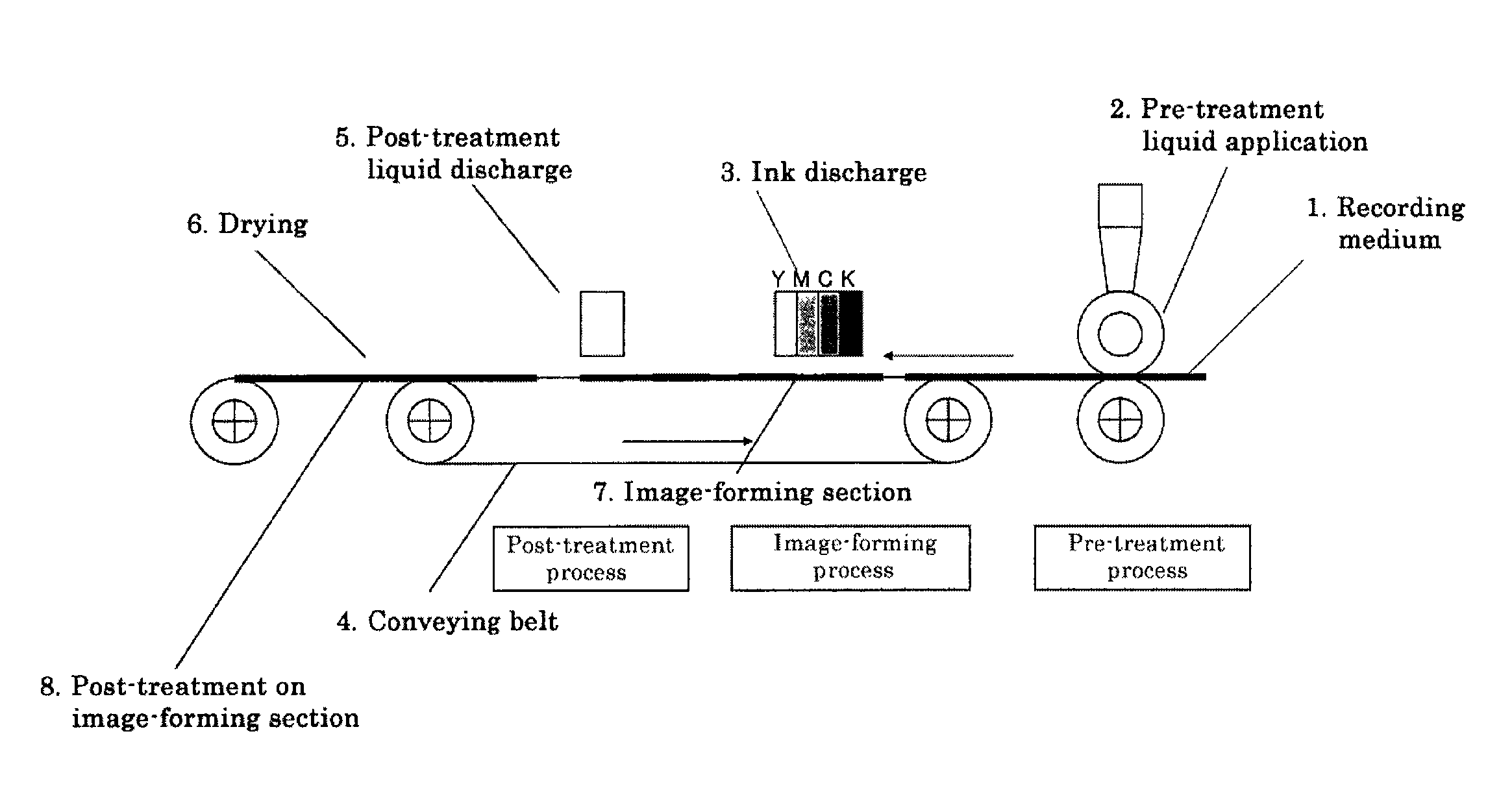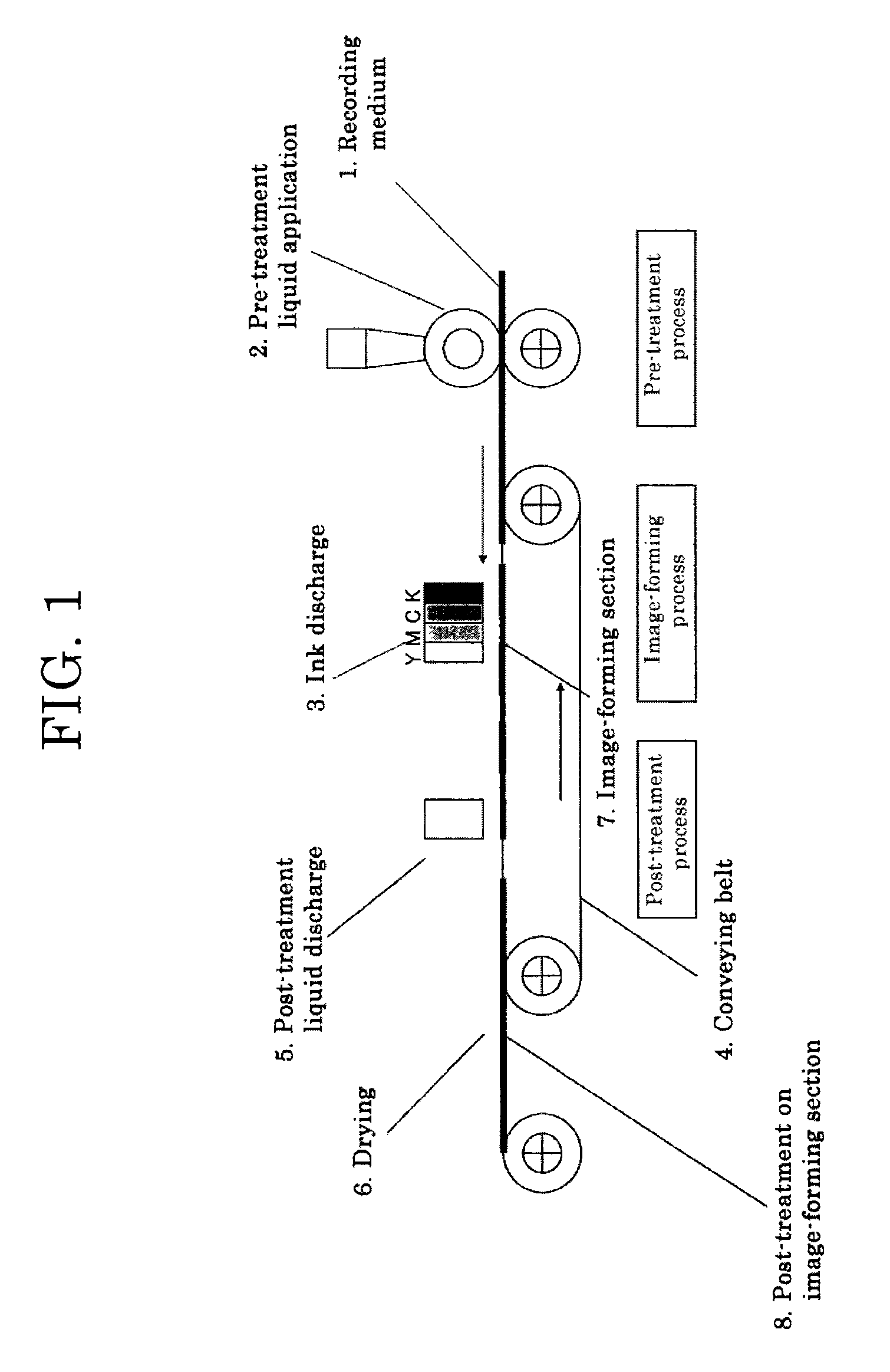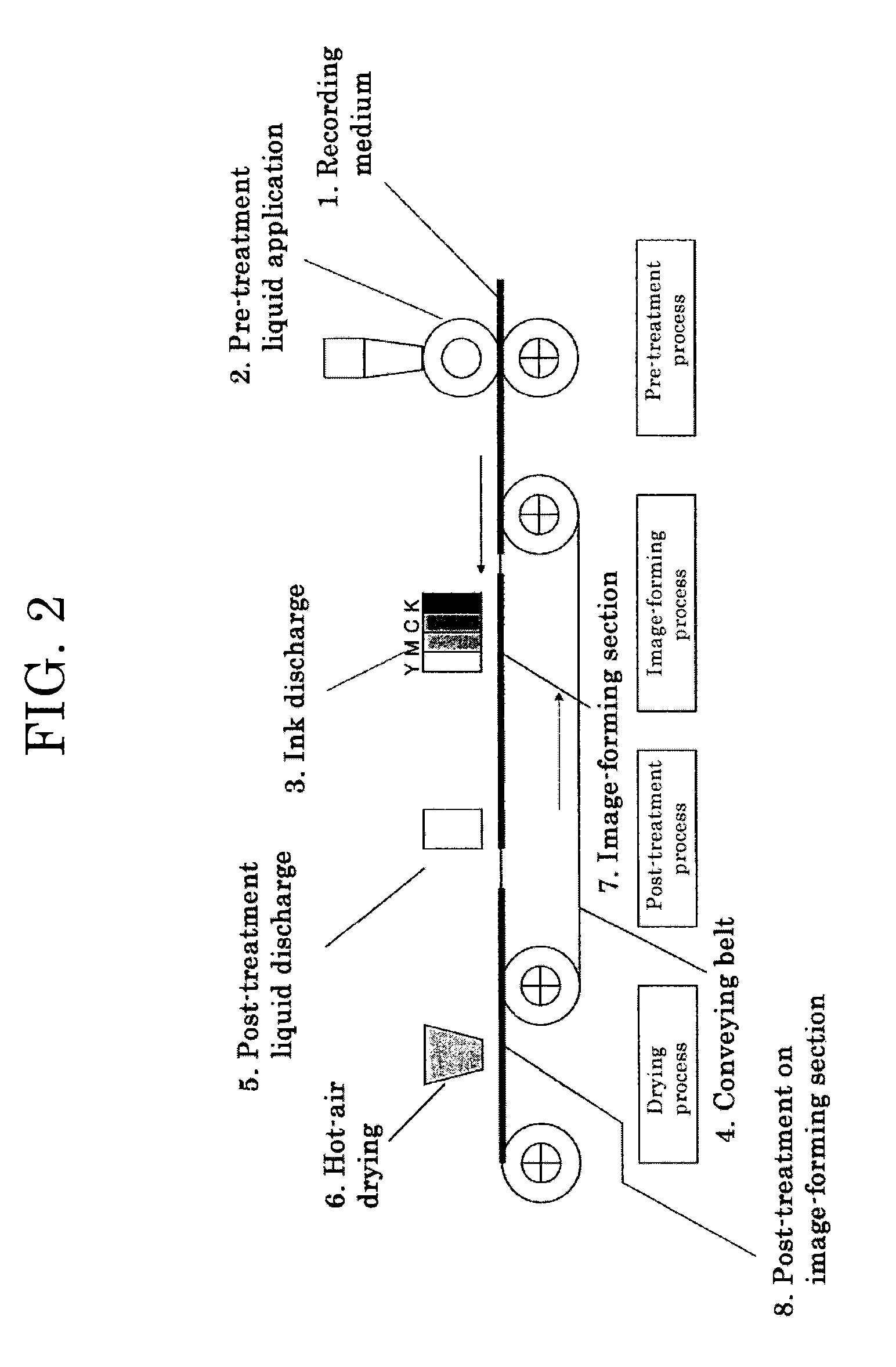Post-treatment liquid for inkjet recording, image forming method, cartridge and image forming apparatus
a post-treatment liquid and inkjet technology, applied in the direction of printing, coating, inks, etc., can solve the problems of affecting the appearance of the image, the image quality largely degrades, and the image quality largely decreases, so as to achieve the effect of superior beading quality and scratch resistan
- Summary
- Abstract
- Description
- Claims
- Application Information
AI Technical Summary
Benefits of technology
Problems solved by technology
Method used
Image
Examples
production example 1
[0183]A homogeneous mixture was prepared by mixing and stirring materials of a formulation shown below as Post-treatment liquid for inkjet recording 1 for 1 hour. Next, it was subjected to a pressure filtration by a polyvinylidene fluoride membrane filter having an average pore diameter of 5.0 μm to remove coarse particles and dust, and a post-treatment liquid for inkjet recording of Production Example 1 was obtained.
[Post-Treatment Liquid for Inkjet Recording 1]
[0184]
Anionic self-emulsifying ether-based urethane28.6%by massresin WLS-210 (manufactured by DIC Corporation;active ingredient: 35% by mass)1,3-Butanediol15%by massGlycerin15%by massZONYL FS-300 (fluorosurfactant, manufactured by1%by massDuPont Co.; ingredient: 40% by mass)Pure water40.4%by mass
[0185]Uniform mixtures were prepared by respectively mixing and stirring materials of formulations shown below as Pre-treatment liquids 1 and 2 for 1 hour. Next, they were subjected to polyvinylidene fluoride membrane filter having a...
preparation example a
[0190]After sufficient stirring of 28 g of Polymer Solution A, 42 g of C.I. Pigment Red 122, 13.6 g of a 1-mol / L aqueous solution of potassium hydroxide, 20.0 g of methyl ethyl ketone, and 13.6 g of ion-exchanged water, the mixture was kneaded using a roll mill.
[0191]After an obtained paste was sufficiently stirred with an addition of 200 g of pure water, methyl ethyl ketone and water were distilled using an evaporator, and it was further subjected to a pressure filtration by a polyvinylidene fluoride membrane filter having an average pore diameter of 5.0 μm in order to remove coarse particles. Thereby, a magenta pigment-containing polymeric particle dispersion having a pigment content of 15% by mass and a solid content of 20% by mass was obtained.
[0192]An average particle diameter (D50) of the polymeric particles in this dispersion was measured, and it was 82.7 nm. Here, the measurement of an average particle diameter (D50) was carried out using a particle size distribution measuri...
preparation example b
[0193]A cyan pigment-containing polymeric particle dispersion having a pigment content of 15% by mass and a solid content of 20% by mass was obtained in the same manner as Preparation Example a except that C.I. Pigment Red 122 in Preparation Example a was changed to a phthalocyanine pigment (C.I. Pigment Blue 15:3).
[0194]An average particle diameter (D50) of the polymeric particles in this dispersion was measured similarly to Preparation Example a, and it was 110.6 nm.
Preparation of Yellow Pigment-Containing Polymeric Particle Dispersion
PUM
| Property | Measurement | Unit |
|---|---|---|
| particle diameter | aaaaa | aaaaa |
| particle diameter | aaaaa | aaaaa |
| glass transition temperature | aaaaa | aaaaa |
Abstract
Description
Claims
Application Information
 Login to View More
Login to View More - R&D
- Intellectual Property
- Life Sciences
- Materials
- Tech Scout
- Unparalleled Data Quality
- Higher Quality Content
- 60% Fewer Hallucinations
Browse by: Latest US Patents, China's latest patents, Technical Efficacy Thesaurus, Application Domain, Technology Topic, Popular Technical Reports.
© 2025 PatSnap. All rights reserved.Legal|Privacy policy|Modern Slavery Act Transparency Statement|Sitemap|About US| Contact US: help@patsnap.com



